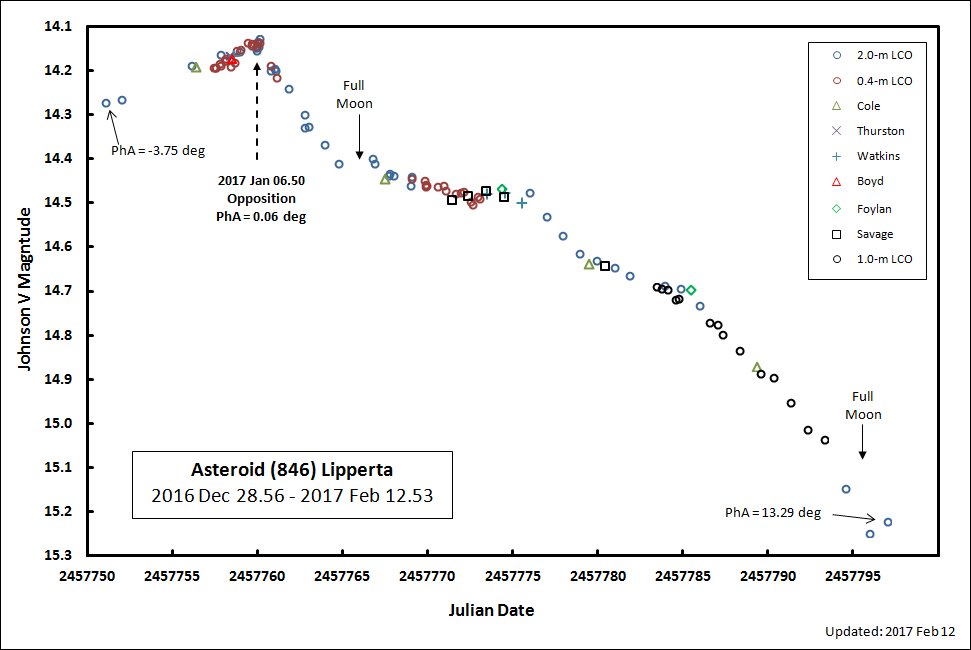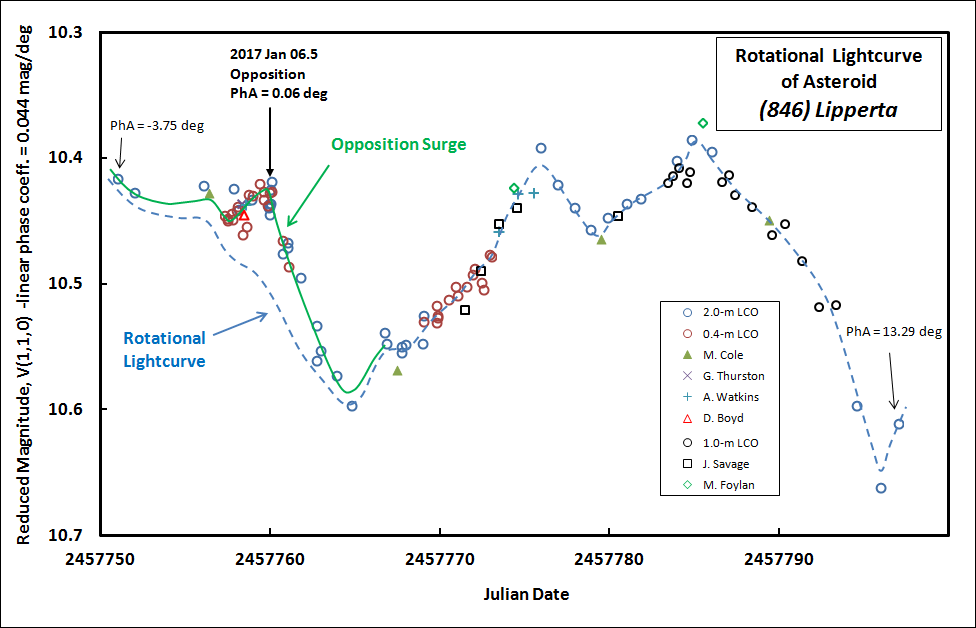
Dear Observer,
First the good news: Despite poor UK weather, I have managed to schedule LCO
observations through the recent Full Moon and so the rotational lightcurve
is shaping up rather nicely, as shown in the attached.
Next the bad news: Access to LCO telescopes is drying up largely because of
the rather indiscriminate usage of available telescope time (TT) by a small
number of inexperienced users. The 1.0-m telescopes were doing the bulk of
the work but no more TT remains: we shall have to wait most probably until
April before more time is granted. The 2.0-m is now taking the brunt and TT
will probably be exhausted in a week or so. I shall revert to using
iTelescope if that happens.
Fortunately, the Moon is now out of the way and so observers equipped with
telescopes of 0.25-m or larger should be able to get very useful data on
what is now a fading 15th magnitude object. Tomorrow night looks possibly
clear for many in the UK.
As to the nature of the object itself, we look to have just passed a sharp
minimum that could quite easily have been missed. This makes the amplitude
more like 0.25 mag and gives us more dynamic range to work with when solving
its rotation period. So far we have two minima delineated, and as these are
separated by ~32 d, rotation periods of 64-68 d look credible. The
opposition surge may be a little smaller than previously thought.
Clear skies,
Richard Miles
2017 February 12 20:25
P.S. If you know of other potential observers suitably equipped then please
forward this note to them. Thanks.

